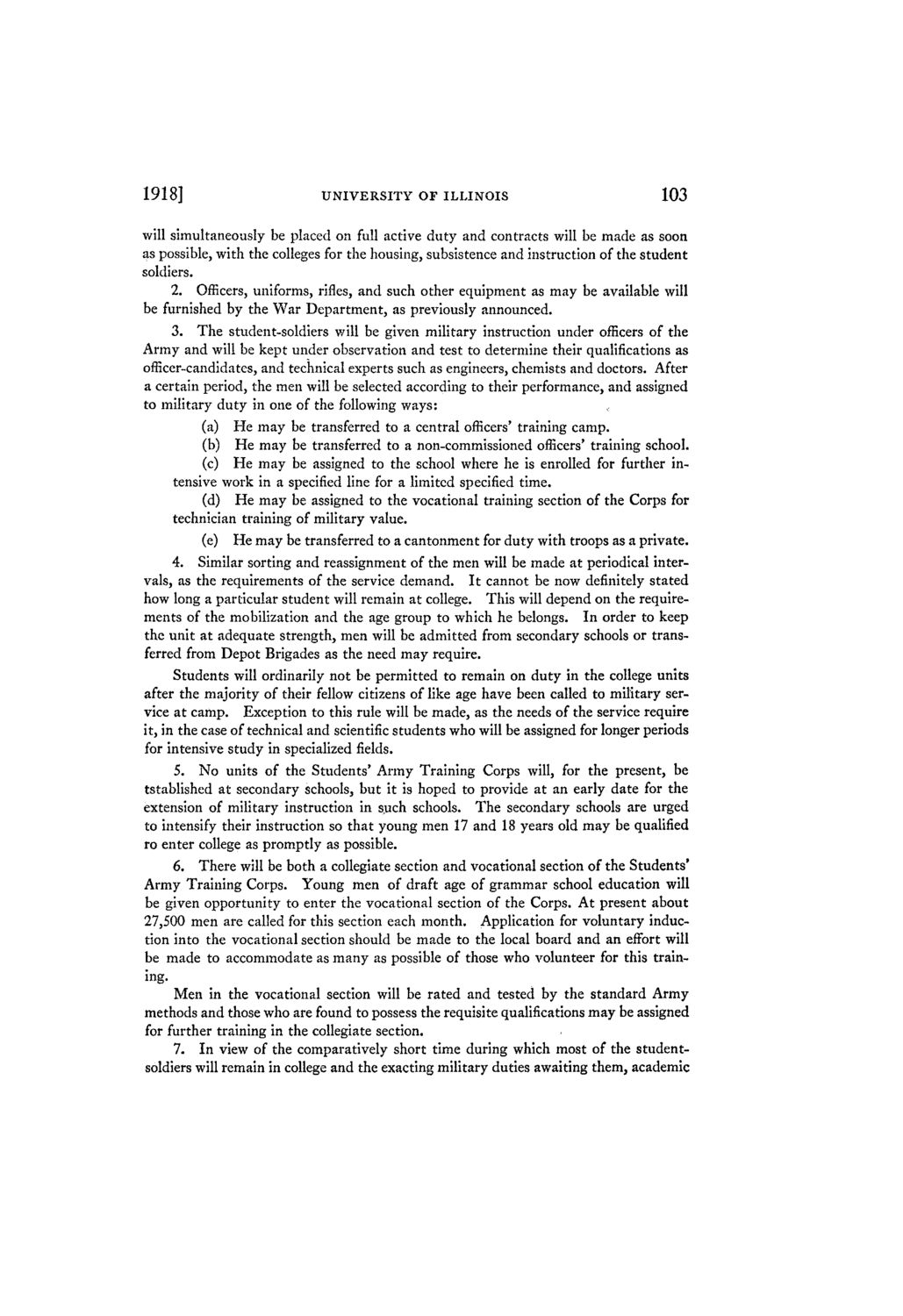| |
| |
Caption: Board of Trustees Minutes - 1920
This is a reduced-resolution page image for fast online browsing.

EXTRACTED TEXT FROM PAGE:
1918] UNIVERSITY OF ILLINOIS 103 will simultaneously be placed on full active duty and contracts will be made as soon as possible, with the colleges for the housing, subsistence and instruction of the student soldiers. 2. Officers, uniforms, rifles, and such other equipment as may be available will be furnished by the War Department, as previously announced. 3. The student-soldiers v/ill be given military instruction under officers of the Army and will be kept under observation and test to determine their qualifications as officer-candidates, and technical experts such as engineers, chemists and doctors. After a certain period, the men will be selected according to their performance, and assigned to military duty in one of the following ways: (a) He may be transferred to a central officers' training camp. (b) He may be transferred to a non-commissioned officers' training school. (c) He may be assigned to the school where he is enrolled for further intensive work in a specified line for a limited specified time. (d) He may be assigned to the vocational training section of the Corps for technician training of military value. (e) He may be transferred to a cantonment for duty with troops as a private. 4. Similar sorting and reassignment of the men will be made at periodical intervals, as the requirements of the service demand. It cannot be now definitely stated how long a particular student will remain at college. This will depend on the requirements of the mobilization and the age group to which he belongs. In order to keep the unit at adequate strength, men will be admitted from secondary schools or transferred from Depot Brigades as the need may require. Students will ordinarily not be permitted to remain on duty in the college units after the majority of their fellow citizens of like age have been called to military service at camp. Exception to this rule will be made, as the needs of the service require it, in the case of technical and scientific students who will be assigned for longer periods for intensive study in specialized fields. 5. No units of the Students' Army Training Corps will, for the present, be tstablished at secondary schools, but it is hoped to provide at an early date for the extension of military instruction in such schools. The secondary schools are urged to intensify their instruction so that young men 17 and 18 years old may be qualified ro enter college as promptly as possible. 6. There will be both a collegiate section and vocational section of the Students' Army Training Corps. Young men of draft age of grammar school education will be given opportunity to enter the vocational section of the Corps. At present about 27,500 men are called for this section each month. Application for voluntary induction into the vocational section should be made to the local board and an effort will be made to accommodate as many as possible of those who volunteer for this training. Men in the vocational section will be rated and tested by the standard Army methods and those who are found to possess the requisite qualifications may be assigned for further training in the collegiate section. 7. In view of the comparatively short time during which most of the studentsoldiers will remain in college and the exacting military duties awaiting them, academic
| |